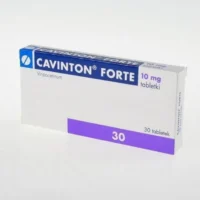Description
Eglonil (Sulpiride) Capsules 50 mg. №30
Ingredients:
Each capsule contains 50 mg of sulpiride as the active ingredient.
Mechanism of Action:
Sulpiride, the active ingredient in Eglonil capsules, is a selective dopamine D2 receptor antagonist that exerts antipsychotic effects by modulating dopaminergic neurotransmission in the brain.
Pharmacological Properties:
Sulpiride acts as a dopamine antagonist primarily at the D2 receptors in the brain, leading to its antipsychotic effects. It also has some antidepressant properties and can modulate the release of certain hormones.
Indications for Use:
Eglonil capsules are indicated for the treatment of schizophrenia and other psychotic disorders.
Contraindications:
Do not use Eglonil capsules in patients with known hypersensitivity to sulpiride or any of the excipients. Caution is advised in patients with a history of neuroleptic malignant syndrome.
Side Effects:
Common side effects of Eglonil capsules may include extrapyramidal symptoms, hyperprolactinemia, sedation, and gastrointestinal disturbances. Rare but serious side effects include neuroleptic malignant syndrome and QT prolongation.
Usage Instructions:
The usual adult dose is 50-200 mg per day, divided into 2-3 doses. Take Eglonil capsules as prescribed by your healthcare provider. Swallow the capsules whole with a glass of water.
Benefits Compared to Analogues:
Eglonil has shown efficacy in managing both positive and negative symptoms of schizophrenia with a lower risk of metabolic side effects compared to some other antipsychotic medications.
Suitable Patient Groups:
Eglonil can be used in adult patients with schizophrenia and other psychotic disorders. It is not recommended for use in children, pregnant women, or elderly patients with dementia-related psychosis.
Storage Conditions and Shelf Life:
- Store Eglonil capsules at room temperature away from moisture and heat.
- Do not use Eglonil capsules after the expiration date printed on the packaging.
Packaging Description:
Eglonil capsules are available in a pack containing 30 capsules. The packaging is designed to protect the capsules from light and moisture.
Clinical Evidence and Proven Effectiveness:
Studies have shown that sulpiride is effective in managing both positive and negative symptoms of schizophrenia. Research published in the Journal of Clinical Psychopharmacology demonstrated the efficacy of sulpiride in improving cognitive function and reducing symptom severity in patients with schizophrenia compared to placebo.





